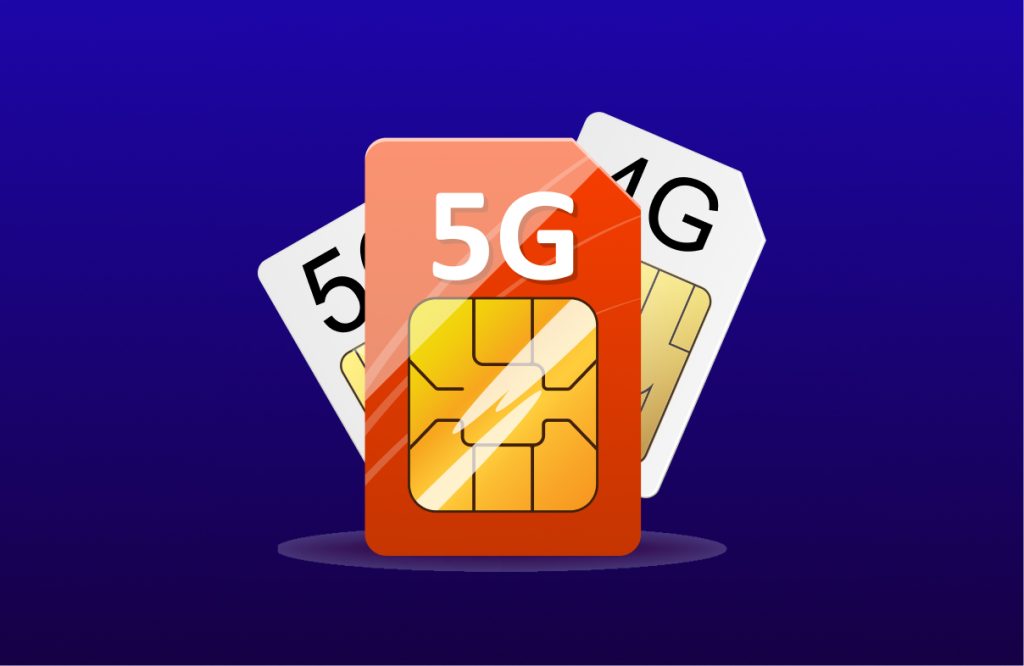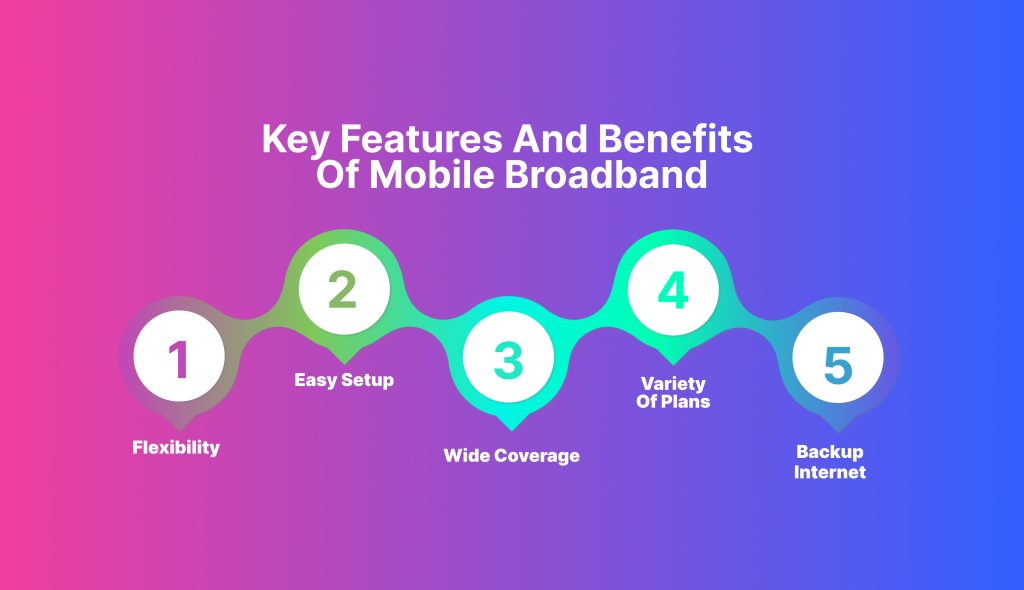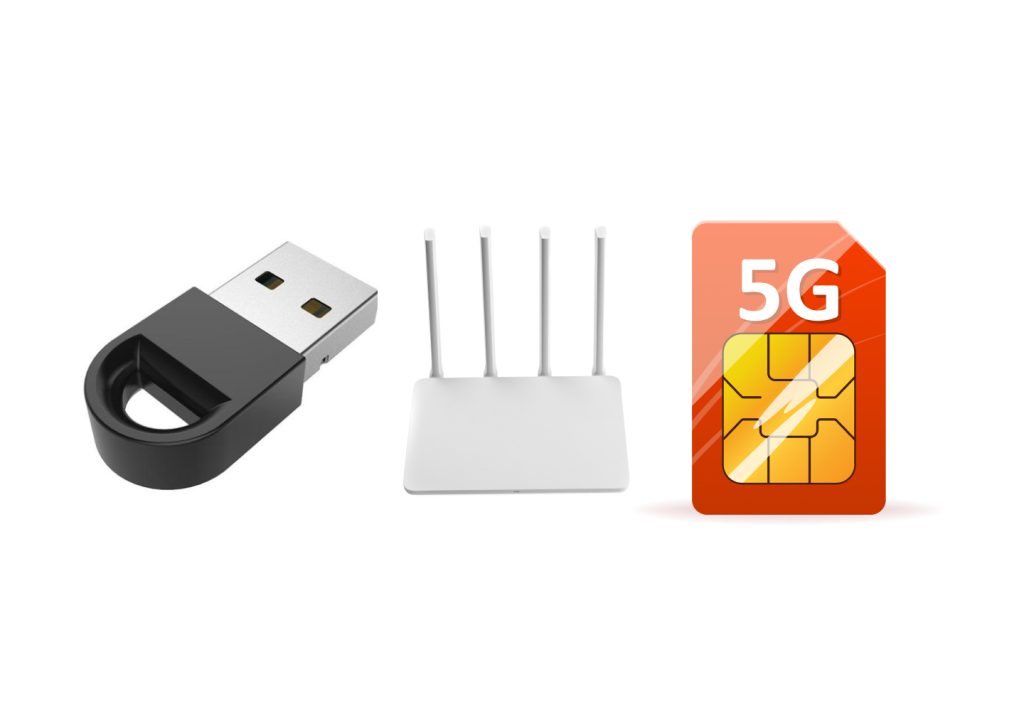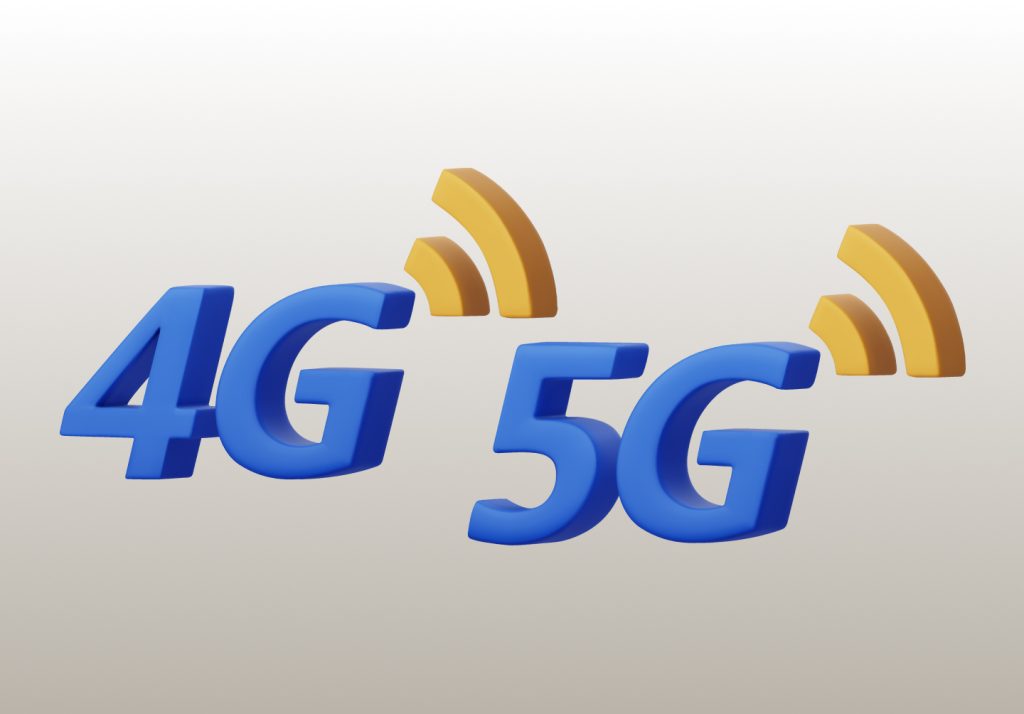

There’s a unique kind of freedom that comes with knowing you can stay connected no matter where life takes you. Whether you’re catching a train across the country, setting up a pop-up office in a remote cabin, or simply avoiding the monotony of home by working from a park, being online isn’t just convenient—it’s essential. But here’s the thing: traditional broadband often feels like a leash, keeping you tied to one spot, one router, and one network. This is where mobile broadband steps in, revolutionizing how you think about internet access. With mobile broadband, you’re not just limited to your home Wi-Fi; you can take your connection wherever you go. It’s like having a personal internet bubble that follows you around, ensuring you’re always in touch, always in the loop, and always ready for whatever comes next.
You might be wondering, “Is mobile broadband really that different from the Wi-Fi I already use at home?” The answer is a resounding yes. This guide will dive deep into what mobile broadband is, how it works, and why it could be the perfect solution for your ever-changing lifestyle. By the end, you’ll know exactly how to harness the power of mobile broadband to fit your needs, whether that means staying productive on the road, keeping up with your favorite shows from anywhere, or simply ensuring you’re never offline when it matters most.
So let’s explore how mobile broadband can untether you from the constraints of traditional internet access, giving you the flexibility and freedom to live your life fully connected, no matter where you are.
What is mobile broadband?
Mobile broadband is more than just another way to access the internet—it’s a transformative tool that allows you to stay online without being tied to a specific location. Think of it as your portable gateway to the web, offering you the flexibility to connect wherever you have a signal. Whether you’re using a smartphone, tablet, or laptop, mobile broadband ensures you have the internet at your fingertips, no matter where life takes you.
But what exactly does “mobile broadband” mean? In essence, it’s a wireless internet connection that leverages the same cellular networks your phone uses. This means you can get online in places where traditional broadband isn’t available or when you’re on the move. Unlike Wi-Fi, which is dependent on a fixed router, mobile broadband is about having the internet follow you, rather than the other way around.
In a world where connectivity is key, mobile broadband offers a new level of convenience and freedom. No more hunting for public Wi-Fi or worrying about whether your home internet can handle one more Zoom call. With mobile broadband, you control when and where you’re online, making it an ideal solution for today’s increasingly mobile lifestyle.
But how does it all work? Let’s dive deeper into the nuts and bolts of mobile broadband, so you can understand exactly how this technology empowers you to stay connected no matter where your day takes you.
How does mobile broadband work?
Understanding how mobile broadband works can demystify the technology and help you see just how powerful it can be. At its core, mobile broadband operates much like the internet connection on your smartphone. It uses a SIM card to connect your device—whether that’s a laptop, tablet, or a dedicated mobile broadband router—to a cellular network, allowing you to access the internet via 3G, 4G, or 5G.

The beauty of mobile broadband is in its simplicity. You’re no longer tethered to a single location or dependent on someone else’s Wi-Fi. Instead, you have your own private internet connection that’s available wherever you can get a mobile signal. This is a game-changer for anyone who values flexibility, whether you’re a digital nomad, a frequent traveler, or simply someone who wants to stay connected on your own terms.
Think of it like this: with mobile broadband, your internet connection is as portable as your mobile phone. If you have a good signal, you can work from virtually anywhere—whether it’s a bustling city, a remote village, or even on the road. And with the rollout of 5G, the speeds you can achieve on mobile broadband are starting to rival, and in some cases surpass, traditional home broadband.
Now that you know the basics of how mobile broadband operates, let’s explore its key features and the benefits it offers to anyone looking for a more versatile way to stay connected.
Key features and benefits of mobile broadband
When it comes to choosing how you stay connected, mobile broadband offers several distinct advantages that make it a compelling option. Here’s why mobile broadband might be the perfect solution for you:
1. Flexibility and Mobility: One of the biggest benefits of mobile broadband is its portability. Whether you’re working from a café, traveling across the country, or setting up a temporary office at a client’s site, you can take your internet with you. This level of mobility is something traditional broadband simply can’t offer.
2. Easy Setup: Setting up mobile broadband is a breeze. There’s no need for complicated installations, waiting for a technician, or dealing with wires. All you need is a device that supports mobile broadband and a SIM card, and you’re good to go. In minutes, you can have a fully functional internet connection, wherever you are.
3. Wide Coverage: Because mobile broadband relies on cellular networks, it’s available in areas where traditional broadband might not reach. If you live in a rural area or travel frequently, mobile broadband could be a lifeline, providing a reliable connection where other options fall short.
4. Variety of Plans: Mobile broadband plans are diverse, catering to a range of needs and budgets. Whether you need high-speed internet for streaming and gaming or just a basic connection for emails and browsing, there’s likely a plan that suits your usage. Plus, with the rise of 5G, you can enjoy speeds that were once only possible with fixed broadband.
5. Backup Internet: Mobile broadband can also serve as a backup for your home internet. If your primary connection goes down, having mobile broadband means you’re not left high and dry. It’s a smart choice for anyone who relies on consistent connectivity.
Mobile broadband is all about giving you the freedom to use the internet on your own terms. Whether you’re a remote worker, a frequent traveler, or someone who simply values flexibility, mobile broadband could be the key to staying connected wherever life takes you.
What do you need to use mobile broadband?
1. A Compatible Device: First and foremost, you need a device that supports mobile broadband. This could be a laptop, tablet, or even a mobile broadband router. Some laptops and tablets come with built-in SIM card slots, while others may require an external dongle or mobile Wi-Fi device.
2. A SIM Card: Just like your phone, mobile broadband requires a SIM card to connect to the cellular network. You’ll need to choose a plan from a provider that suits your data needs. The SIM card will be the bridge between your device and the internet.
3. A Mobile Broadband Plan: Selecting the right plan is crucial. Depending on how you plan to use mobile broadband, you might opt for a pay-as-you-go option, a monthly contract, or even a data-only SIM. Consider your data usage habits and how much flexibility you need.
4. Network Coverage: Finally, to make the most of mobile broadband, you’ll want to ensure good network coverage in the areas you plan to use it. This is especially important if you’re often in rural or remote locations.
Once you have these components, using mobile broadband is as simple as inserting the SIM card, connecting your device, and going online. It’s a seamless process that gives you instant access to the internet, no matter where you are.
Types of mobile broadband
When it comes to mobile broadband, there’s no one-size-fits-all solution. The type of mobile broadband you choose will depend on your specific needs, lifestyle, and the devices you use. Here’s a breakdown of the most common types:
1. USB Dongles: These small, portable devices plug directly into your laptop’s USB port, providing an instant internet connection. USB dongles are a great choice for those who need a simple, no-fuss way to get online, especially if you frequently use a laptop on the go.
2. Mobile Wi-Fi Routers (Mi-Fi): If you need to connect multiple devices at once, a mobile Wi-Fi router (often called a Mi-Fi device) is an excellent option. These devices create a personal Wi-Fi hotspot that you can share with others, making them ideal for family trips, group work sessions, or even just ensuring all your gadgets stay connected.
3. SIM-Only Plans: For those who already have a device with a SIM card slot, a SIM-only plan could be the best option. This allows you to choose a data plan and simply insert the SIM card into your device, whether it’s a tablet, a smartphone, or a laptop. It’s a flexible option that’s perfect if you prefer using your existing equipment.
Each type of mobile broadband offers unique advantages, so it’s worth considering how you plan to use it before making a decision. Whether you’re looking for something that’s plug-and-play, capable of handling multiple connections, or just a simple SIM card solution, there’s a mobile broadband option that’s right for you.
Which providers offer mobile broadband?
Choosing the right mobile broadband provider is essential to getting the best service for your needs. In the UK, there are several providers that offer mobile broadband, each with its own strengths and weaknesses. Some of the most well-known include:
1. EE: Known for its extensive 4G and 5G coverage, EE offers a variety of mobile broadband plans. Whether you need a large data allowance for streaming and gaming or just enough to keep you connected on the go, EE likely has an option for you.
2. Vodafone: Vodafone’s mobile broadband plans are versatile, with options for both light and heavy users. Their 5G coverage is expanding rapidly, making them a good choice if you want the fastest speeds available.
3. Three: Three offers some of the most competitively priced mobile broadband plans on the market, with generous data allowances. If you’re looking for value, Three might be the provider for you.
4. O2: With a range of flexible plans and good coverage, O2 is a solid choice for mobile broadband. They also offer a variety of extras, like free access to their Wi-Fi hotspots, which can be a nice bonus.
When choosing a provider, consider factors like coverage in your area, data limits, speed, and cost. You’ll also want to look out for any special offers or discounts that could make one provider more attractive than another.
Should you get 4G or 5G mobile broadband?
The decision between 4G and 5G mobile broadband comes down to how you plan to use your internet connection. Both have their merits, but they cater to slightly different needs:
4G Mobile Broadband: 4G is widely available across the UK, offering reliable speeds that are more than sufficient for everyday tasks like browsing, streaming, and video calls. It’s also a bit more affordable than 5G, making it a good choice if you don’t need ultra-fast speeds or if 5G isn’t yet available in your area.
5G Mobile Broadband: 5G is the next generation of mobile broadband, delivering speeds that can rival even the fastest home broadband connections. If you’re a heavy user—someone who frequently streams in 4K, games online, or downloads large files—5G might be worth the investment. It’s also future-proof, ensuring you’ll have access to the fastest possible speeds as the technology continues to evolve. However, it’s important to check if 5G is available in your area, as coverage is still expanding.
If you find yourself needing reliable internet for work, travel, or just staying connected wherever you are, 4G is a solid, dependable choice. But if you’re after lightning-fast speeds and want to stay ahead of the curve, 5G could be the better option. The choice ultimately depends on your specific needs, budget, and where you live or frequently travel. As 5G continues to expand, it’s set to become the new standard, offering faster and more reliable connections wherever you are. But if you’re in an area with limited 5G coverage or you’re looking for a more budget-friendly option, 4G still has plenty to offer.
Key differences Between 3G, 4G, and 5G
| Feature | 3G | 4G | 5G |
| Introduction Year | Early 2000s | Late 2000s | 2019 |
| Speed | Up to 2 Mbps | 10-100 Mbps | 1-10 Gbps |
| Latency | 100 ms | 50 ms | 1 ms |
| Use Cases | Basic web browsing, emails | HD streaming, video calls, gaming | 4K streaming, AR/VR, IoT, smart cities |
| Coverage | Global, but declining | Widely available | Expanding, still limited in some areas |
| Bandwidth Efficiency | Low | Moderate | High |
| Device Compatibility | Limited to older devices | Most modern smartphones and devices | Newer devices with 5G capabilities |
| Battery Consumption | Higher | Lower than 3G | Optimized, lower than 4G |
| Network Capacity | Low | Higher than 3G | Massive capacity for connected devices |
Can mobile broadband replace home broadband?
If you’ve ever wondered whether mobile broadband could replace your traditional home broadband, the answer is—potentially, yes. But it depends on your specific needs and circumstances.
Mobile broadband offers incredible flexibility, especially for those who are constantly on the move or live in areas where fixed broadband is slow or unreliable. With 4G or 5G mobile broadband, you can achieve speeds that are more than sufficient for everyday use, from streaming to gaming to video conferencing. Plus, the portability of mobile broadband means you’re not tied to one location—ideal for renters, travelers, or anyone who values flexibility.
However, there are a few considerations. Mobile broadband often comes with data limits, which could be a drawback if you’re a heavy internet user. Additionally, signal strength can vary depending on your location, which could impact your experience. Finally, if you have multiple users or devices in your home, traditional broadband might still be the more stable and cost-effective option.
That said, for many people, especially those with moderate internet needs or who prioritize mobility, mobile broadband can be a viable alternative to home broadband. It’s all about weighing the pros and cons based on your unique situation.
Practical applications and use cases for mobile broadband
Scenarios illustrating different use cases—such as a remote worker in a café, a traveler using mobile broadband on a train, and a student using it for online classes.
Mobile broadband isn’t just a backup option or a solution for when you’re away from home. It’s a powerful tool that can cater to a variety of situations and lifestyles. Here are some of the top use cases for mobile broadband:
- For Frequent Travelers: Whether you’re hopping between cities or exploring the countryside, mobile broadband keeps you connected. It’s perfect for accessing maps, staying in touch with loved ones, or even working remotely from a hotel or café.
- For Remote Workers: If you work remotely, mobile broadband offers a reliable way to stay productive from virtually anywhere. Whether you’re setting up shop at a coworking space, a coffee shop, or a park bench, you’ll have the internet connection you need to get things done.
- For Students: Mobile broadband is a lifesaver for students who need internet access for research, online classes, or staying in touch with friends and family. It’s especially useful for those living in temporary accommodations where fixed broadband isn’t available.
- For Those Without Fixed-Line Broadband: If you live in a rural area or a location where traditional broadband isn’t available, mobile broadband can be an excellent alternative. With mobile broadband, you can access high-speed internet even in places where other options are limited.
- As a Backup Connection: Even if you have reliable home broadband, mobile broadband can serve as a valuable backup. If your primary connection goes down, mobile broadband ensures you’re not left without internet access when you need it most.
Can you use mobile broadband overseas?
Yes, you can use mobile broadband abroad, but there are a few things you should know before you pack your bags. Roaming charges, data limits, and network compatibility can vary widely depending on your provider and destination, so it’s essential to do some research beforehand.
Many providers offer international roaming as part of their mobile broadband plans, but this often comes with additional costs. Before you travel, check with your provider to see what options are available. Some might offer special roaming packages that can help you manage costs, while others may charge per megabyte, which can quickly add up.
Additionally, keep in mind that not all devices will work seamlessly in every country. Network frequencies and technologies differ around the world, so it’s worth ensuring that your mobile broadband device is compatible with the networks at your destination.
If you’re planning to travel extensively or spend a significant amount of time abroad, it might be worth considering a local SIM card or a global mobile broadband plan that offers more favorable rates and coverage. That way, you can stay connected without worrying about excessive roaming charges.
Tips for finding the best mobile broadband deal
Finding the best mobile broadband deal requires a bit of research, but the payoff is worth it. Here’s how to make sure you’re getting the most value for your money:
1. Compare Providers: Start by comparing the major mobile broadband providers in your area. Look at factors like coverage, speed, data limits, and pricing. Platforms like Docalla are excellent for this purpose, as they offer comprehensive comparisons and user reviews to help you evaluate each provider’s reliability and find the best plan for your needs.
2. Consider Your Data Needs: Think about how much data you use on average. If you’re a light user who only needs the internet for browsing and emails, a smaller data plan might suffice. But if you stream videos, games online, or work remotely, a larger data allowance or even an unlimited plan may be necessary.
3. Look for Special Offers: Many providers offer promotional deals, especially for new customers. These might include discounted rates, free data boosts, or additional perks like access to public Wi-Fi hotspots. Keep an eye out for these offers, but make sure to read the terms and conditions to understand when the promotional period ends and what the regular rate will be.
4. Check Coverage: Even the best deal isn’t worth much if you can’t get a good signal. Before committing to a plan, verify that the provider offers strong coverage in the areas you’ll be using mobile broadband most often.
5. Assess Flexibility: Consider whether you need a contract plan or prefer pay-as-you-go. Contract plans often offer better rates for larger data allowances, but they may require a long-term commitment. Pay-as-you-go is more flexible but can be more expensive on a per-gigabyte basis.
Conclusion
Mobile broadband is more than just a convenient way to stay connected on the go—it’s a versatile, powerful tool that can fit into a wide range of lifestyles. Whether you’re a frequent traveler, a remote worker, or someone living in an area with limited fixed-line broadband options, mobile broadband offers a level of flexibility and convenience that’s hard to beat.
By understanding the various providers, plans, and technologies available, you can choose a mobile broadband solution that meets your needs and budget. Just remember to consider factors like data limits, coverage, and speed when making your decision.
Ultimately, the choice between mobile broadband and traditional broadband comes down to your specific circumstances. With the right plan, mobile broadband can be an excellent solution for staying connected wherever life takes you.


